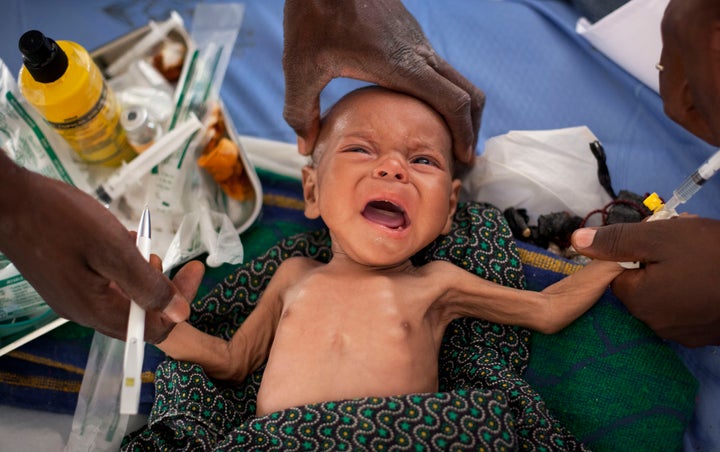
This blog is part of a series organized by The Huffington Post and the NGO alliance InterAction to call attention to the crisis in the Sahel, a region in sub-Saharan Africa where more than 18 million people face starvation and 1.1 million children under the age of 5 are at risk of dying from acute malnutrition. Click here to read more of HuffPost Impact's coverage of the Sahel and here to find out what InterAction members and others are doing in the Sahel.
Last week in this space, I blogged about how to bring the heart and the head together to create an effective response to the crisis in the Sahel -- how to meet urgent humanitarian needs in a way that also helps people become less vulnerable in the long term. Today I want to continue with that theme -- heart and head -- and take a look at why, in spite of the evidence, we, the development community and the donor community, continue to implement short-term solutions to deep-rooted problems.
I think that, if we're being truly honest, we in the relief and development community have to shoulder some of the blame. We have helped perpetuate the cycle of crisis and response by failing to fully demonstrate -- with evidence -- the tremendous impact that investments in things like irrigation, water harvesting, drought-resistant seeds, soil conservation, and market access for smallholder farmers can have for poor communities. Though we can now clearly see the patterns of increased frequency and severity of droughts in the Sahel region, for years we've responded to each drought as if it was a discrete crisis, and treated the symptoms rather than the disease.
I think funding agencies also share the blame. Governments and donors have been slow to recognize the considerable impact they could have by funding preventative interventions rather than waiting until the situation became dire. With so many competing priorities, and limited funds to go around, the modus operandi has been to direct resources to the most urgent needs and to fund programs that will have the quickest results.
This pattern continues today: The United Nations Office for the Coordination of Humanitarian Affairs (OCHA) has issued an appeal for $1.6 billion for the Sahel (covering Burkina Faso, Chad, Mali, Niger and Mauritania), and to date less than one-fourth of the agriculture related funding needs expressed in the appeal are covered. Studies have shown, time and again, that investing in agriculture is the single most important and effective investment in reducing poverty and increasing community resilience, yet the funding trends in times of crisis continue to undercut this investment. Funding for emergency needs is certainly critical, but to be truly effective that emergency funding must be matched with longer term investments in people's self-sufficiency.
If we are ever going to break the cycle of hunger and malnutrition that threatens lives every few years in West Africa, we have to scale up the investment in resilience, starting with stable and strong agricultural foundations in vulnerable communities. Practitioners have to start implementing more programs that address root causes and that adapt to the changing climate trends, and funders have to start funding more of these programs.
In recent years, the international community has begun to recognize the importance of this investment, and funding for agriculture has been reinvigorated with larger pledges of long term help. President Obama's "Feed the Future" initiative is a critical and welcomed shift in the right direction. The same mindset now needs to be applied when responding to humanitarian crises such as the Sahel.
How can we as development professionals make this an attractive option for funding agencies? With evidence. Rather than solely appealing to donors' hearts, with urgent pleas to stave off certain disaster, we need to also appeal to their heads, with compelling case studies and program evaluations that show how well these investments have paid off. We need to go back to communities where we implemented resilience programs in the past, and show the work's lasting impact. Are their crops healthier? Their animals heartier? Their families nourished? Their household income more stable? Are they weathering the drought better than communities that have not had access to resilience based programming?
If we can answer all these questions in the affirmative, present the evidence that shows this approach works, and explain how these communities have succeeded in becoming more resilient, I believe that the international community will begin viewing humanitarian crises through the dual filters of immediate relief and long term resilience. It's simply better stewardship. Investing in prevention is more cost-effective than responding to crises, and it also means that fewer people will suffer when, inevitably, the rains fail again in a few years.
We can't prevent droughts, but we can equip people to deal with the consequences. And that appeals to my heart and my head.